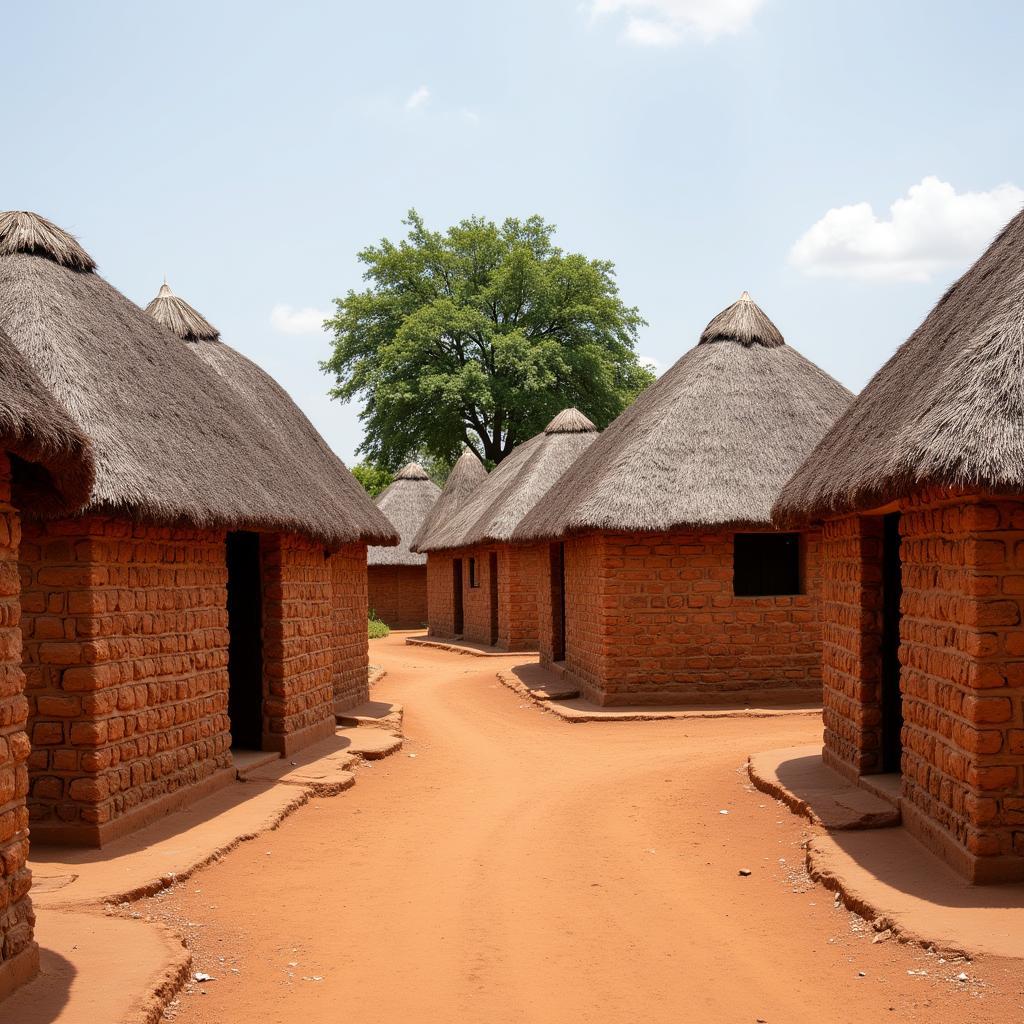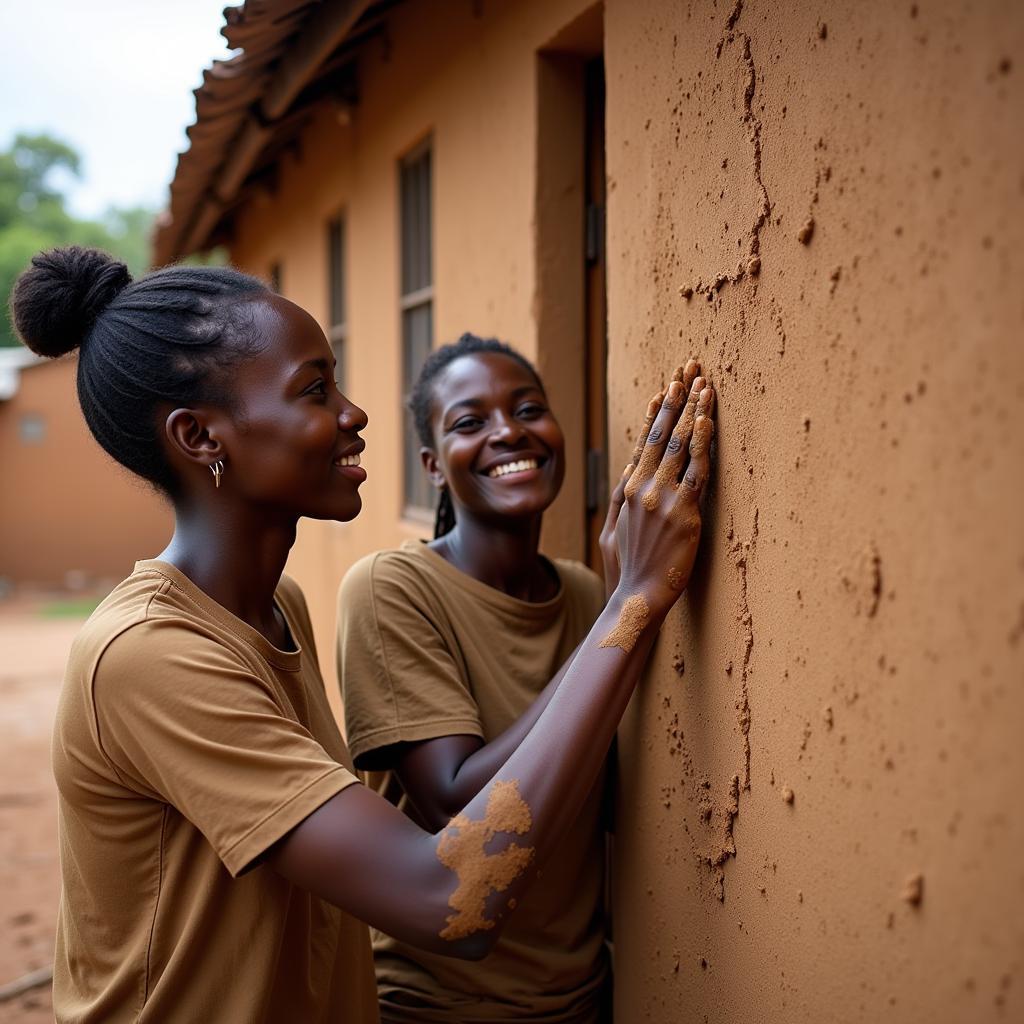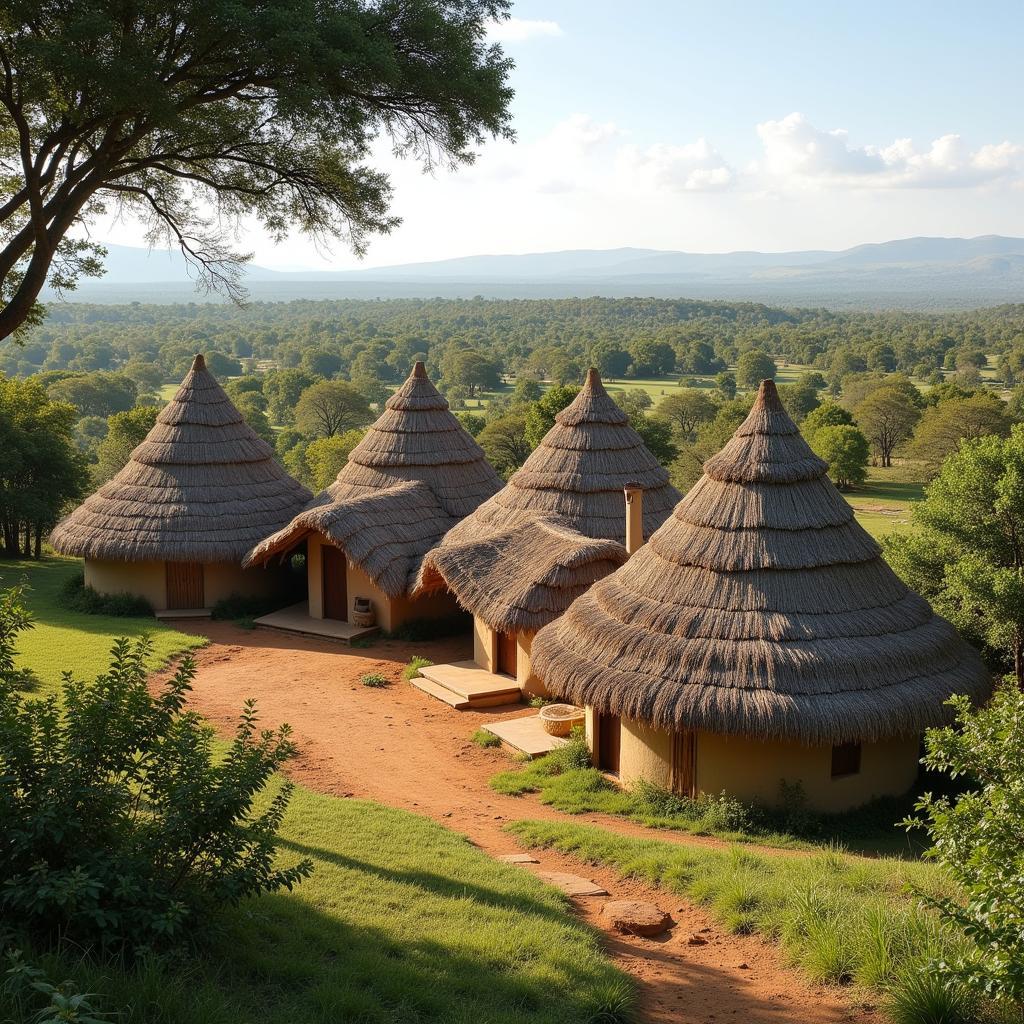African Construction Techniques: Ancestral Wisdom Meets Modern Challenges
Africa, a continent renowned for its diverse cultures and breathtaking landscapes, also boasts a rich architectural heritage. For millennia, African communities have developed ingenious construction techniques, adapting to diverse climates and utilizing locally sourced materials. These traditional African Construction Techniques, often infused with symbolic meaning and cultural significance, offer valuable lessons in sustainable building practices and resonate with the increasing global emphasis on eco-friendly architecture.
 Ancient African Mud Brick Architecture
Ancient African Mud Brick Architecture
Harnessing the Earth: Mud and Clay Construction
Across Africa, from the Maghreb to the southern tip, earth emerges as a dominant building material. This reliance on readily available resources underscores the deep connection between African communities and their environment. Mud, often mixed with straw or animal dung for added strength and durability, is molded into bricks or used as a plaster.
Building with Earth: Advantages and Applications
The use of mud and clay in African construction techniques presents a multitude of benefits:
- Sustainability: Earth is a renewable resource and using it minimizes the carbon footprint associated with transporting materials.
- Temperature Regulation: Mud walls provide excellent insulation, keeping interiors cool in scorching heat and retaining warmth during cooler periods.
- Cost-Effectiveness: Locally sourced earth significantly reduces construction costs, making it an accessible option for many communities.
 African Women Plastering a Mud House
African Women Plastering a Mud House
Examples of earth-based construction abound across the continent. In Morocco, traditional Berber villages showcase stunning examples of rammed earth architecture, with intricate designs adorning the walls. The Great Mosque of Djenné in Mali, the largest mud-brick building globally, stands as a testament to the architectural possibilities of this humble material.
Thatched Roofs: Mastering the Art of Natural Insulation
The iconic thatched roofs so synonymous with African architecture are not merely aesthetically pleasing but serve a vital practical purpose. Woven from dried grasses, reeds, or palm leaves, these roofs offer exceptional insulation against the elements.
The Science Behind Thatch: Ventilation and Climate Control
Thatched roofs effectively regulate indoor temperatures. Their design allows for natural ventilation, facilitating air circulation and preventing heat buildup. During rainy seasons, the tightly packed thatch acts as a waterproof barrier, protecting the interior from leaks.
 Traditional African Homestead with Thatched Roofs
Traditional African Homestead with Thatched Roofs
The lifespan of a well-maintained thatched roof can exceed several decades, demonstrating the sustainability of this traditional technique. From the circular huts of the Maasai in East Africa to the elaborate palaces of Cameroon, thatched roofs remain a defining feature of African architecture.
Beyond Function: Symbolic Meanings in African Architecture
African construction techniques are often imbued with cultural and spiritual significance, reflecting a deep respect for the natural world and ancestral traditions.
- Circular Structures: Frequently found in various African cultures, circular houses symbolize unity, community, and the cyclical nature of life.
- Decorative Elements: Elaborate carvings, paintings, and murals often adorn African structures, reflecting cultural beliefs, myths, and social hierarchies.
[african ochu]
These symbolic elements transform buildings from mere shelters into expressions of cultural identity, preserving traditions and connecting generations through architectural heritage.
African Construction Techniques: Facing Modern Challenges
While traditional African construction techniques offer valuable lessons in sustainable building practices, they also face challenges in the context of rapid urbanization and modern development.
- Preservation of Knowledge: The transmission of traditional building skills from one generation to the next is threatened by a growing preference for modern construction methods.
- Material Sourcing: Deforestation and environmental degradation pose challenges for sourcing traditional materials like thatching grass and timber.
[african hut stock photos]
Addressing these challenges requires promoting sustainable forestry practices, supporting training programs for traditional builders, and integrating the best of ancestral knowledge with modern architectural solutions.
Conclusion
African construction techniques offer a fascinating glimpse into the ingenuity and adaptability of African cultures. From the use of earth as a primary building material to the intricate design of thatched roofs, these techniques demonstrate a deep understanding of the environment and a commitment to sustainable building practices. As the world seeks sustainable solutions for the future, the wisdom embedded in traditional African architecture can provide valuable insights and inspiration. By understanding, preserving, and adapting these techniques, we can create a more sustainable future while honoring the rich architectural heritage of Africa.
FAQ
What are the main materials used in traditional African construction?
The most common materials include earth (mud and clay), wood, thatch (grass, reeds, palm leaves), and stone.
Why are so many African houses round?
Circular structures are often favored for their symbolic representation of unity, community, and the cyclical nature of life. They also offer practical advantages in terms of structural stability and efficient use of materials.
Are traditional African building techniques still used today?
Yes, they are still practiced in many parts of Africa, although their prevalence varies depending on factors like urbanization, economic development, and cultural preservation efforts.
Can I find pictures of African huts?
[african hut stock photos]
Read more:
- [african fish eagle vs bald eagle]
- [african hut]
- [african cilling]
Need help? Contact us:
- Phone: +255768904061
- Email: kaka.mag@gmail.com
- Address: Mbarali DC Mawindi, Kangaga, Tanzania
We are available 24/7 to assist you!

